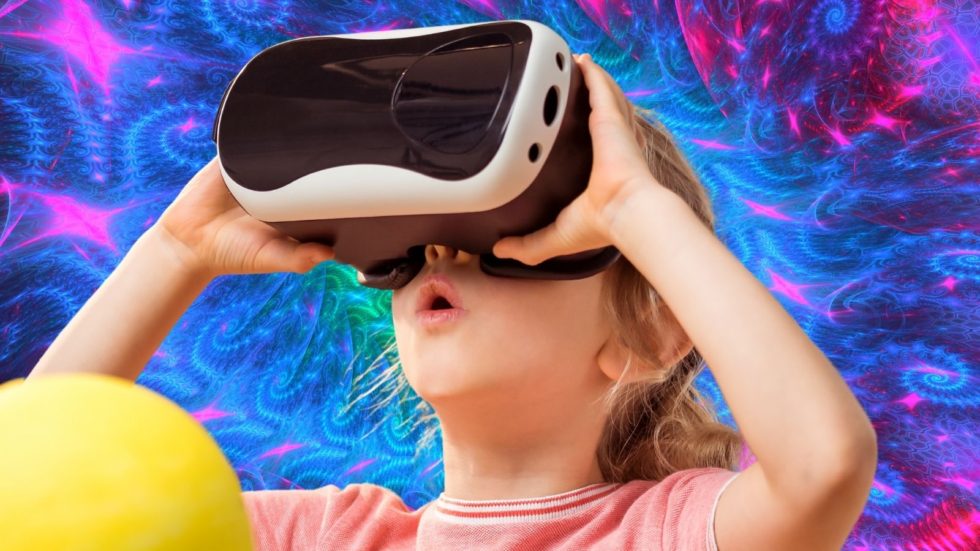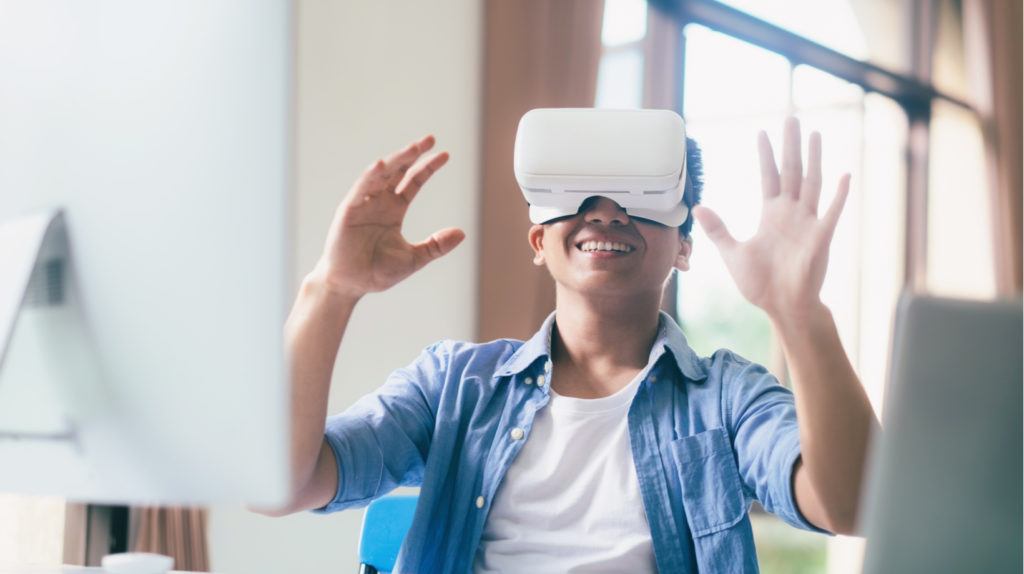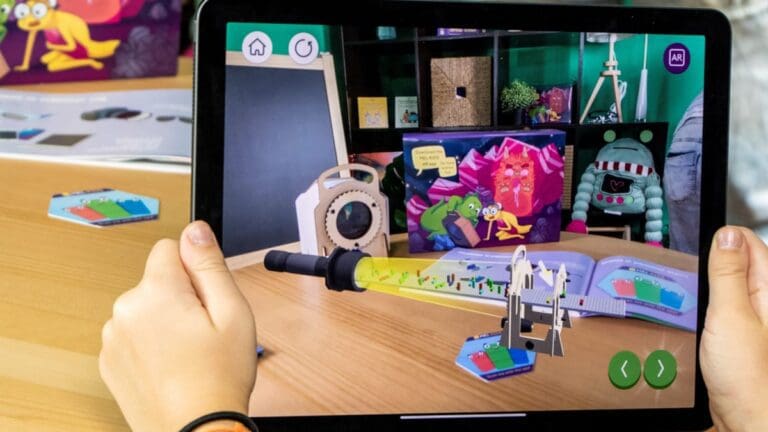Virtual Reality for Kids: Engaging and Educational Experiences
As a parent, you might wonder if virtual reality (VR) suits your kids. Virtual reality for kids enhances the gaming and viewing experience by using specialized LED screens to create multi-dimensional, immersive environments. It means that with a VR headset, your kids are transported into the body of a virtual character, interacting with the world around them in a more compelling manner.
Nowadays, many VR headsets, games, and apps are designed specifically for children, prioritizing their safety and learning potential. By selecting the right content, you can ensure that your kids’ virtual experiences are not only entertaining but also educational. As they explore virtual worlds, they can develop skills, learn new subjects, and engage in interactive activities.
Before introducing VR to your kids, setting ground rules and monitoring their usage is essential. Remember that too much screen time can affect their physical and mental well-being, so balancing VR gameplay with other activities is crucial. With the proper guidance and support, you can foster a safe and enjoyable virtual reality journey for your children.
Benefits of Virtual Reality for Kids
Enhanced Learning and Education
Virtual reality can enhance your child’s learning experience by offering immersive and interactive educational content. This technology helps them better understand and retain complex concepts by simulating real-world scenarios and environments. According to research conducted at Stanford University, virtual reality can be an effective tool for supporting cognitive growth in children.
Problem-Solving and Creativity
VR helps foster problem-solving and creativity by providing engaging activities that challenge your child’s critical thinking skills. Through immersive experiences, they can explore new environments, interact with objects, and develop solutions to complex problems. As a result, your child can build vital 21st-century skills, such as collaboration and adaptability, which are essential for personal and professional growth.
Social Interaction
Virtual reality can also improve your child’s social skills by allowing them to interact with different cultures and environments worldwide. These experiences can help them develop empathy, understanding, and communication abilities. Furthermore, virtual reality can be especially valuable for children who are neurologically atypical, as it enables them to practice social interactions in a controlled and safe setting.

Types of Virtual Reality Experiences
Educational Games
Virtual reality can offer engaging educational experiences that help you learn while having fun. These games promote active learning and often focus on subjects like science, math, history, and language arts.
Through these interactive experiences, you can develop skills like problem-solving, critical thinking, and creativity. Examples of educational VR games for kids include:
- Candy Kingdom VR, a whimsical shooting gallery that’s suitable for children
- VirtualSpeech, which helps improve public speaking skills through realistic simulations
Virtual Field Trips
Another exciting way to use virtual reality is through virtual field trips. These experiences transport you and your class to different locations and time periods, offering immersive learning opportunities that might otherwise be impossible.
With virtual field trips, you can explore historical sites, natural wonders, and cultural landmarks without leaving the comfort of your home or classroom. Some popular virtual field trips include:
- Steam’s VR Museum of Fine Art, lets users view world-class paintings and sculptures up-close
- Google Expeditions, a platform providing numerous interactive tours to teach you about various subjects
In conclusion, virtual reality offers a rich and diverse range of educational experiences, from games designed to teach specific skills to immersive virtual field trips transporting you across the globe. These experiences hold the potential to revolutionize the way you learn while keeping you engaged and excited.
Safety and Health Concerns
Screen Time and Eye Health
As a parent, you need to be aware of the potential effects of screen time on your child’s eye health when using virtual reality (VR) headsets. Some users have reported eye strain, headaches, and in some cases, nausea due to the way VR affects the eye-brain connection (CNN).
It’s essential to manage screen time while incorporating breaks in between VR sessions to minimize these potential side effects. Moreover, encourage your child to maintain proper posture and take periodic breaks to focus on distant objects, which can help reduce eye strain.
Age Restrictions
Another important aspect to consider is the age restriction on VR headsets. While there isn’t enough research data on the safety of current VR technology for children, it’s a good rule of thumb to follow the manufacturer’s recommendations (Scientific American).
Some VR headset manufacturers have set minimum age limits, usually around 12 or 13 years old. By adhering to these age restrictions, you can ensure a safer VR experience for your child.
Content Appropriateness
Ensuring that the content your child is accessing through VR is age-appropriate can be challenging. Some VR environments may expose children to inappropriate content, making it crucial to monitor and restrict access to certain applications and games (Today).
To help maintain control over the content, set up parental controls and regularly check the applications your child uses. In addition, have conversations with your child about responsible VR usage and the types of content they should avoid.
Popular Virtual Reality Devices and Platforms
As a parent or guardian, you must familiarize yourself with popular virtual reality (VR) devices and platforms to ensure you choose your child’s best option. The following are some of the most popular VR devices and platforms:
- Oculus Rift: Known for its high-quality visuals and immersive experience, it is a favorite among gamers. It requires a powerful PC to run, but it offers a wide range of interactive games and educational apps suitable for kids.
- HTC Vive: Another top contender in the VR market, the HTC Vive also requires a powerful PC for optimal performance. It boasts a tracking system allowing room-scale experiences, giving users more freedom to move around in virtual environments.
- PlayStation VR: For those with a PlayStation 4 or PlayStation 5 gaming console, the PlayStation VR offers an affordable and high-quality VR experience. It features a broad selection of kid-friendly games that are both fun and educational.
- Oculus Quest 2: As a standalone VR headset, the Oculus Quest 2 doesn’t require a PC or gaming console. It’s an all-in-one system that offers a vast library of games and experiences for children, and its wireless design makes it more comfortable and convenient to use.
When selecting a VR device for your child, consider factors like the device’s system requirements, available games and experiences, and the age-appropriateness of the content. Always pay attention to recommended age guidelines for both the devices and the games to ensure a safe and enjoyable experience for your child.
Parental Guidance for VR
Supervision
When introducing your children to virtual reality, it’s important to ensure you supervise their experience closely. By monitoring their usage, you can ensure your kids engage in appropriate and safe activities while using VR headsets.
Make it a point to talk to your children about online behaviors and remind them to treat others with respect as they navigate digital realms. This way, you’ll be fostering respectful digital citizenship among your kids.
Content and Platform Selection
As a caregiver, you should invest time in researching the VR platforms and content that are most suitable for your children. Some factors to consider include the minimum age recommendations provided by VR manufacturers, such as Oculus and Valve, which typically suggest an age limit of 13 years and older.
Selecting age-appropriate and educational content tailored to your child’s interests and cognitive abilities is essential. Choices can range from interactive games to immersive 360-degree movies that promote learning and development while keeping your child entertained and engaged.
Platform Selection
When it comes to choosing the right VR platform for your child, several factors should be considered, such as ease of use and safety features. Opt for platforms offering parental control options and monitoring tools, permitting you to control your child’s activities and closely monitor their digital safety.
Finally, be cognizant of the cost, hardware requirements, and technical support different VR platforms provide. This way, you can make an informed decision that aligns with your family’s needs and preferences.







